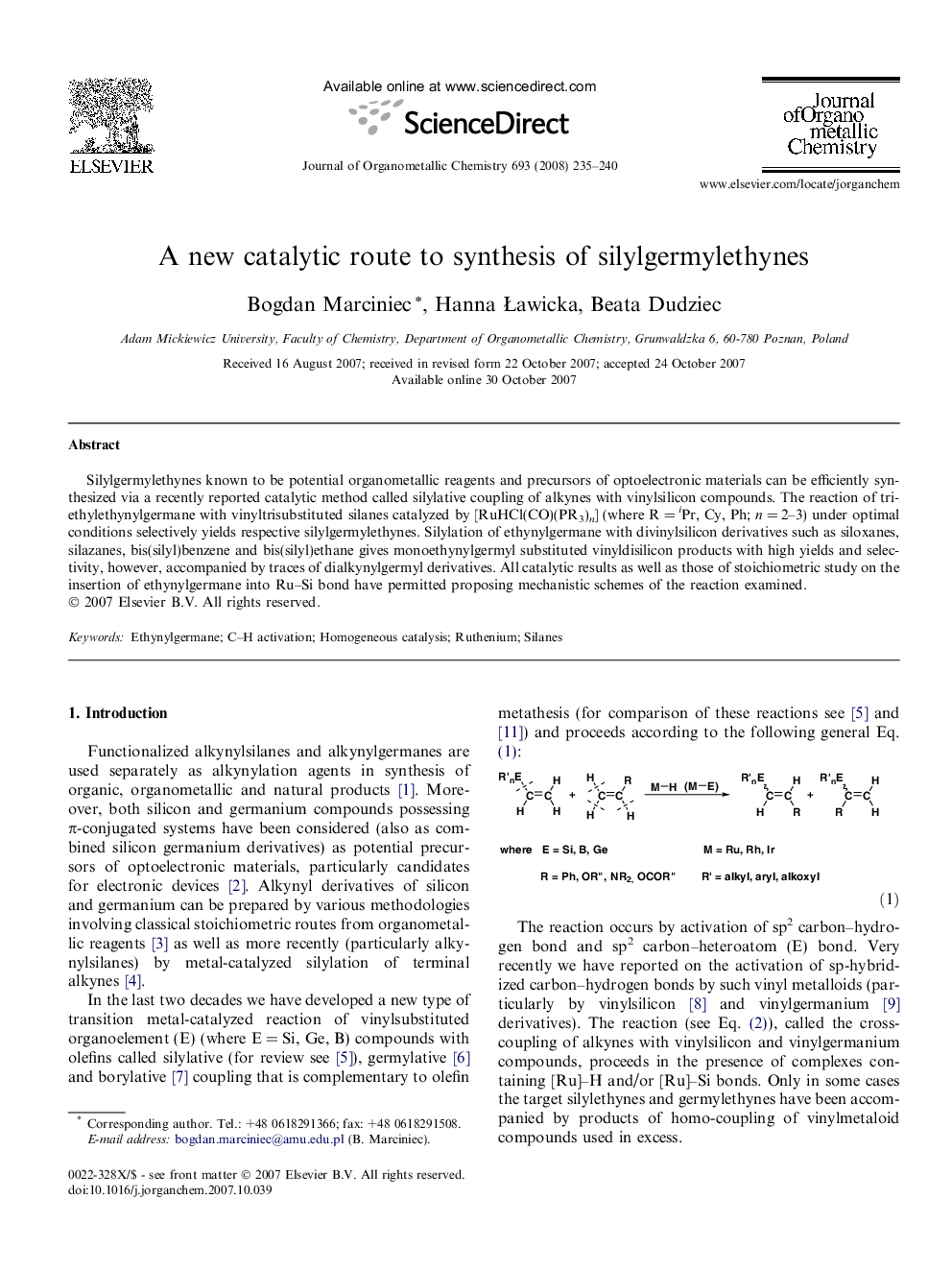| Article ID | Journal | Published Year | Pages | File Type |
|---|---|---|---|---|
| 1326194 | Journal of Organometallic Chemistry | 2008 | 6 Pages |
Silylgermylethynes known to be potential organometallic reagents and precursors of optoelectronic materials can be efficiently synthesized via a recently reported catalytic method called silylative coupling of alkynes with vinylsilicon compounds. The reaction of triethylethynylgermane with vinyltrisubstituted silanes catalyzed by [RuHCl(CO)(PR3)n] (where R = iPr, Cy, Ph; n = 2–3) under optimal conditions selectively yields respective silylgermylethynes. Silylation of ethynylgermane with divinylsilicon derivatives such as siloxanes, silazanes, bis(silyl)benzene and bis(silyl)ethane gives monoethynylgermyl substituted vinyldisilicon products with high yields and selectivity, however, accompanied by traces of dialkynylgermyl derivatives. All catalytic results as well as those of stoichiometric study on the insertion of ethynylgermane into Ru–Si bond have permitted proposing mechanistic schemes of the reaction examined.
Graphical abstractVinylsubstituted silicon compounds (divinyldisilicon derivatives) react selectively with triethylethynylgermane in the presence of complexes containing [Ru]–H and [Ru]–Si bonds with formation of silylgermylethynes (monoethynylgermyl substituted vinyldisilicon products). The reaction opens a new catalytic route for preparation of a class of silylgermylethynes and vinylsilylgermylalkynyl derivatives of both, acetylene and vinyl functionalities, potent organosilicon reagents and precursors for organic synthesis.Figure optionsDownload full-size imageDownload as PowerPoint slide
